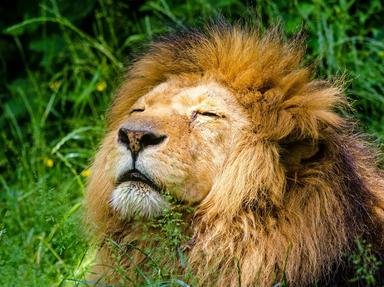Quiz Answer Key and Fun Facts
1. The dromedary camel, perhaps the most famous Sahara resident, has what desert adaptation that allows it to eat thorny plants other animals must avoid?
2. Sahara deathstalker scorpions are part of which itsy-bitsy scientific class?
3. A mountain resident of the Sahara, olive baboons are called that because they survive primarily on olives.
4. Hungry African dung beetles enjoy a feast as much as anyone. What are they specially designed to eat?
5. Since ancient Egyptian times which "black ear" animal is admired as a bird hunter, leaping high into the air on powerful legs to bring them down?
6. What is the term for animals who evolve special adaptations for living in the extremes of the desert?
7. You might not expect to find which creature in the Sahara, with eyes, ears and nostrils at the top of its head?
8. This Sahara creature is pale white, even translucent in flight, with ears often bigger than its head. Which of these briefly lands on the ground to pick up dinner?
9. Native to the Sahara's southern regions, Bateleur eagles are snake-eaters who mate for life. What unique skill is thrilling to watch?
10. The Saharan silver ant has functional desert survival adaptations, including which of these?
Source: Author
Godwit
This quiz was reviewed by FunTrivia editor
rossian before going online.
Any errors found in FunTrivia content are routinely corrected through our feedback system.

